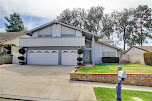INVENTORY'S LOW AND THE COMPETITION'S HIGH, BUT FOR THE FIRST TIME IN MORE THAN TWO YEARS, HOME SEARCHES AND LISTINGS AVAILABLE BEGAN TO CONVERGE
Source: Trulia
For the first time in more than two years, when it comes to price, homebuyers and sellers are finally moving closer together. Market mismatch – Trulia’s measure of the price gap between search interest and available listings – is flat from a year ago, but has dropped 15 percent, falling to 11.1 from 13.1 the previous quarter; the first such drop since prior to the start of 2016. In other words, more homebuyers are searching at price points where listings are more common.
• What looks like good news among very tough market conditions for starter home buyers comes with some hefty caveats. Rather than being a story of increasing inventory meeting high demand for starter homes, instead, searches are just shifting increasingly toward pricier options.
• Nationally, the mismatch gap shrunk to 11.1 from 13.1 last quarter as the share of searches for starter homes fell to 28.7 percent from 31.1 percent. While part of this shift could be attributed seasonality, it is the first quarter to quarter drop we have seen and compares with a mismatch increase from 9.7 to 11.1 during the same period last year.
• It’s not all good news though as the starter listing’s share continued to slide and is now down to22.4 percent of all listings from 22.8 percent last quarter and the first quarter of 2017.
• Premium buyers got pinched this quarter for the first time in more than two years. Premium home searches made up 41.4 percent of all searches and comprised 52.5 percent of listings. Still comfortable, but down from a larger gap of 38.4 percent of searches going to 51.5 percent of listings last quarter and on par with the mismatch a year ago.
• What looks like starter home buyer relief on a national level may just be signs of shoppers giving up. Recent changes are driven by search activity growing more slowly for starter homes than for trade-up and premium homes.
• San Francisco saw the biggest improvement for starter home shoppers from last quarter as starter inventory increased to 40.2 percent from 36.1 percent of all listings and searches to those homes dropped to 42.7 percent from 45.5 percent of all searches.
Read the full story:
https://www.trulia.com/blog/trends/mismatch-q12018/





































